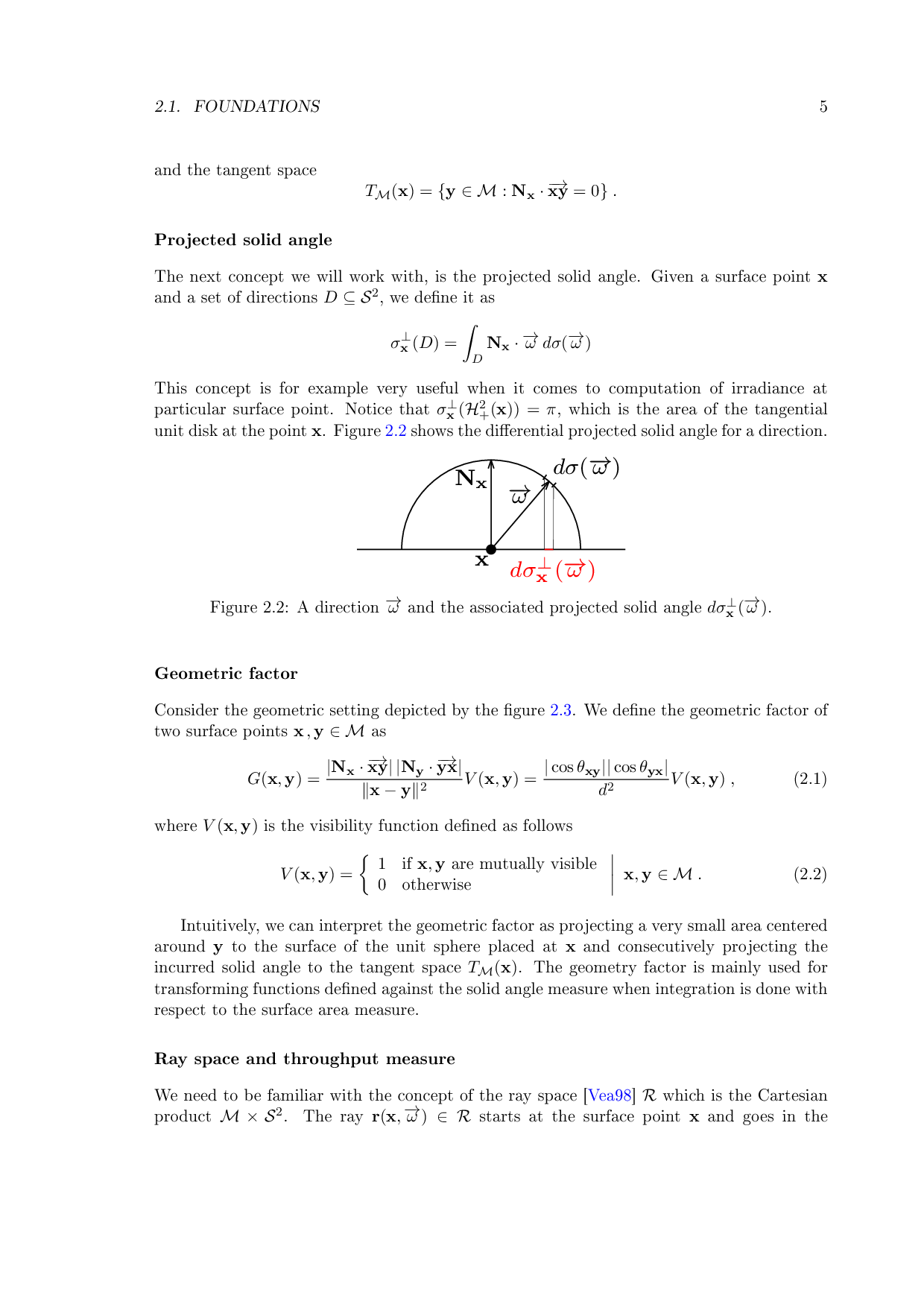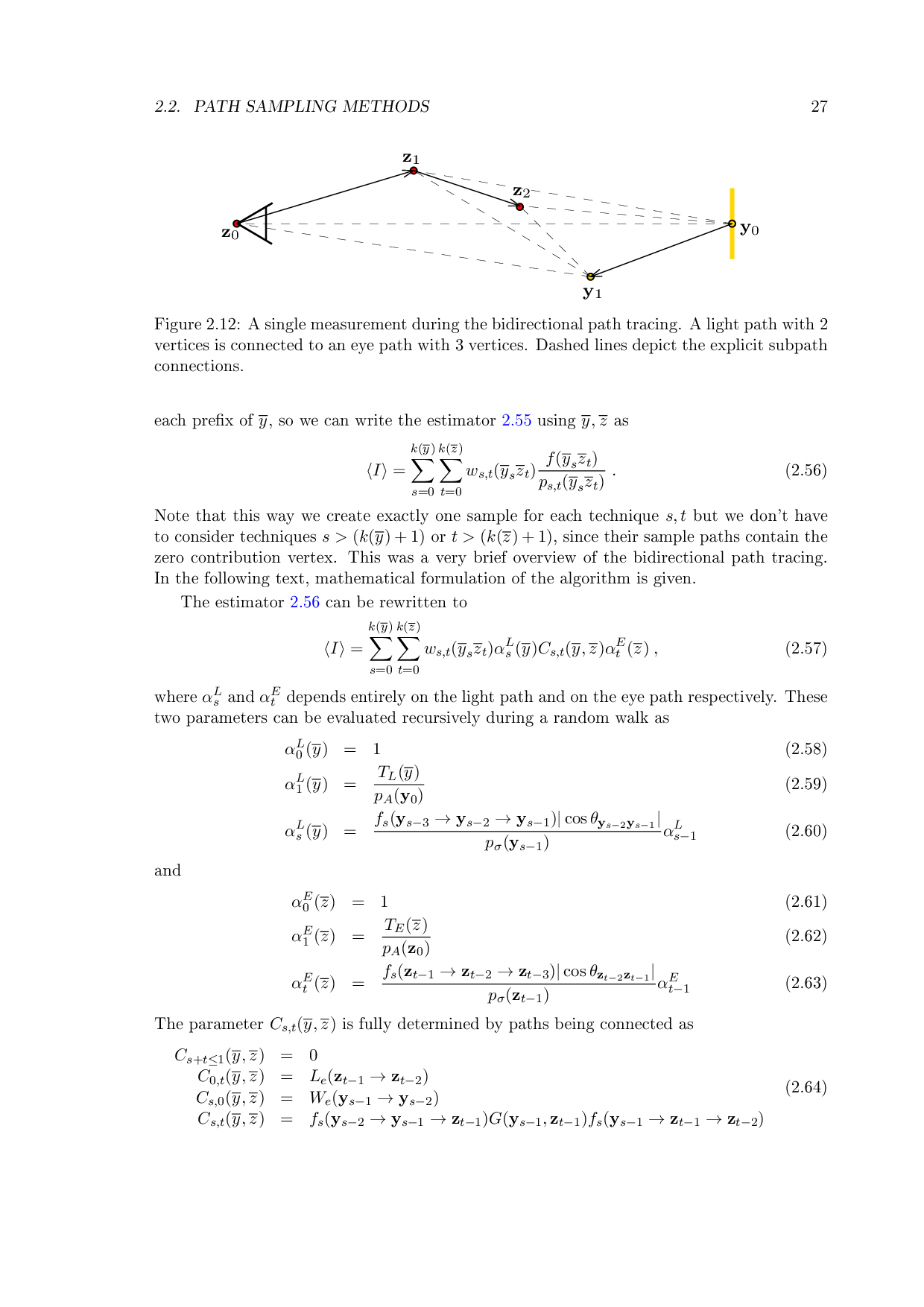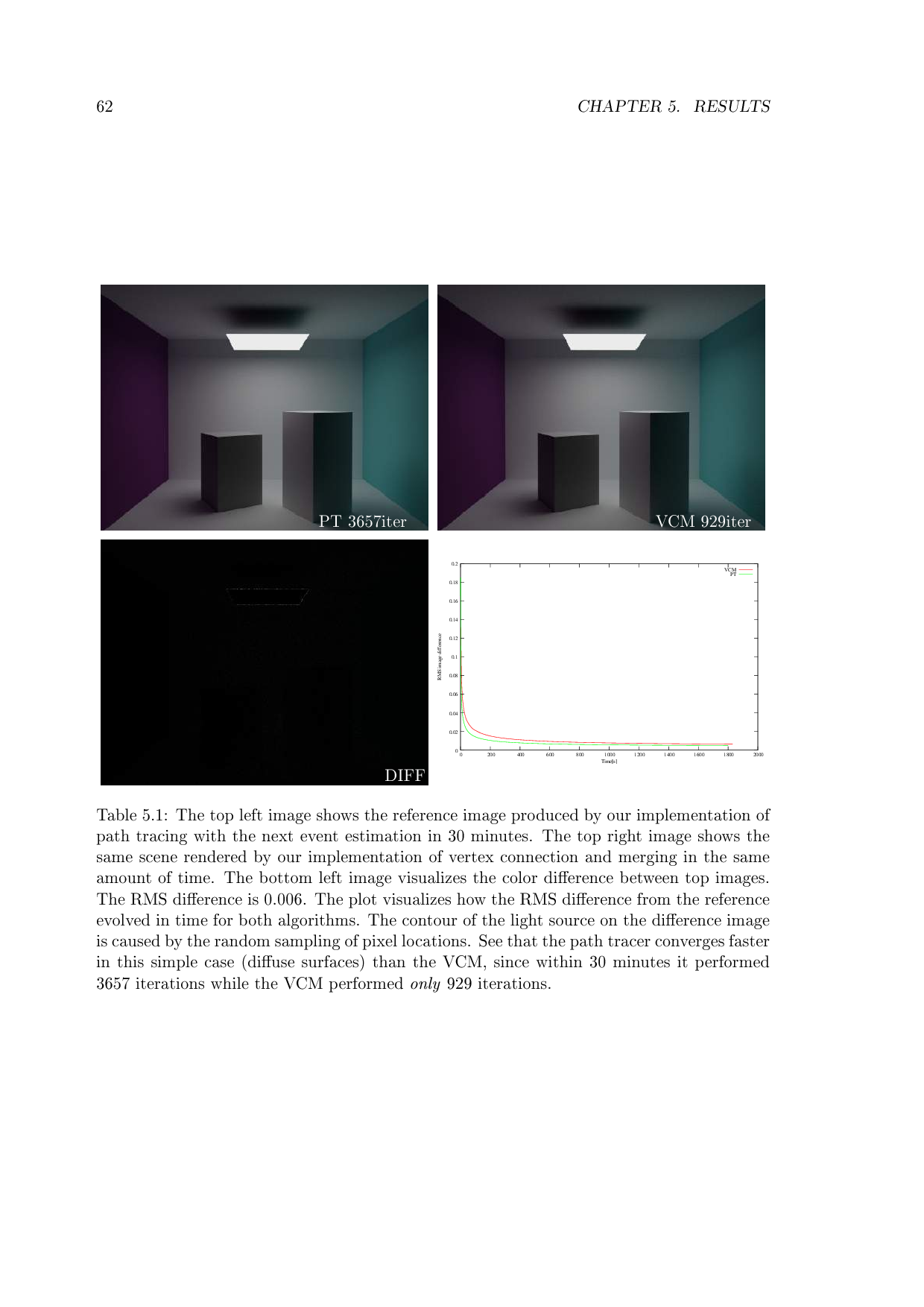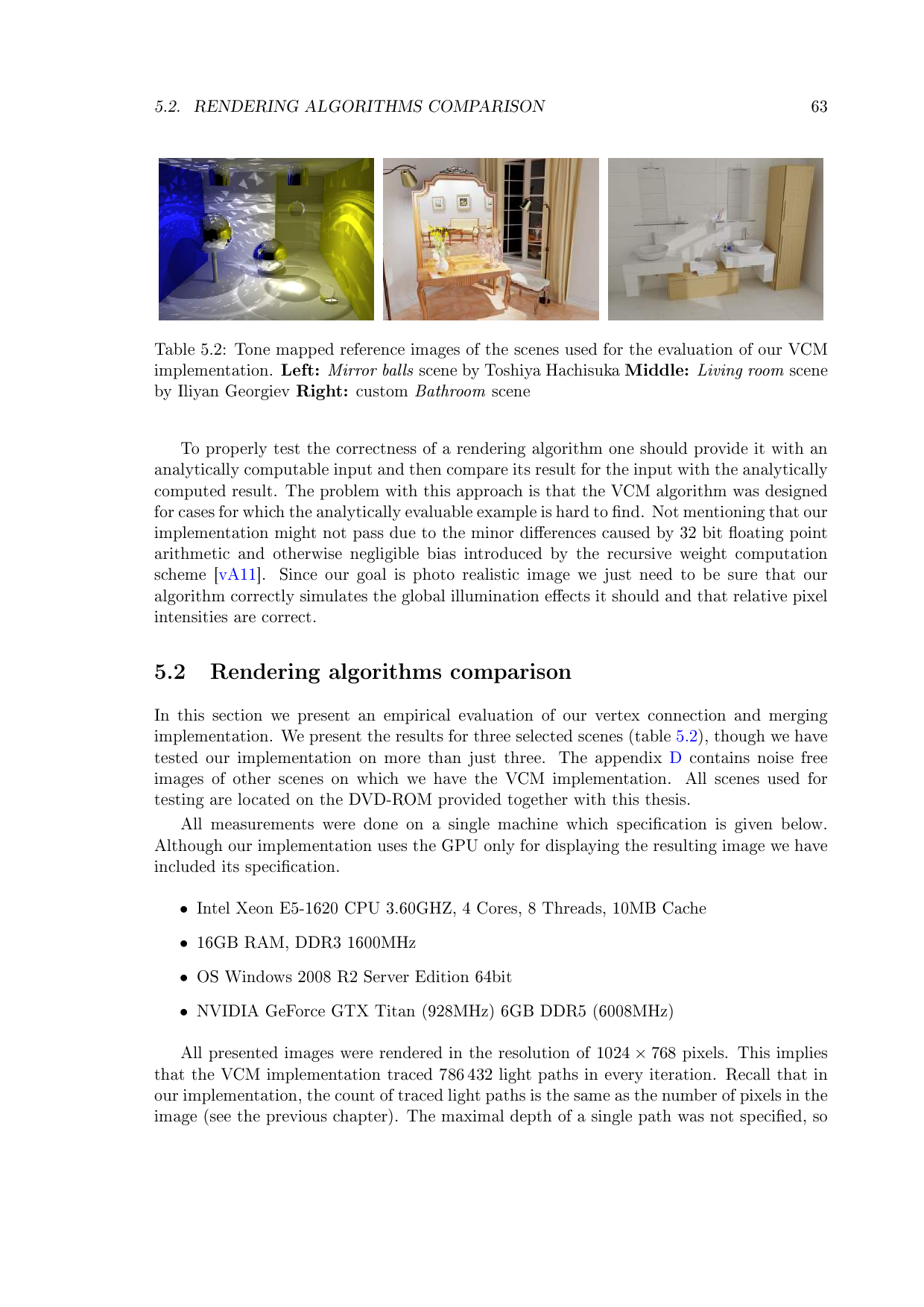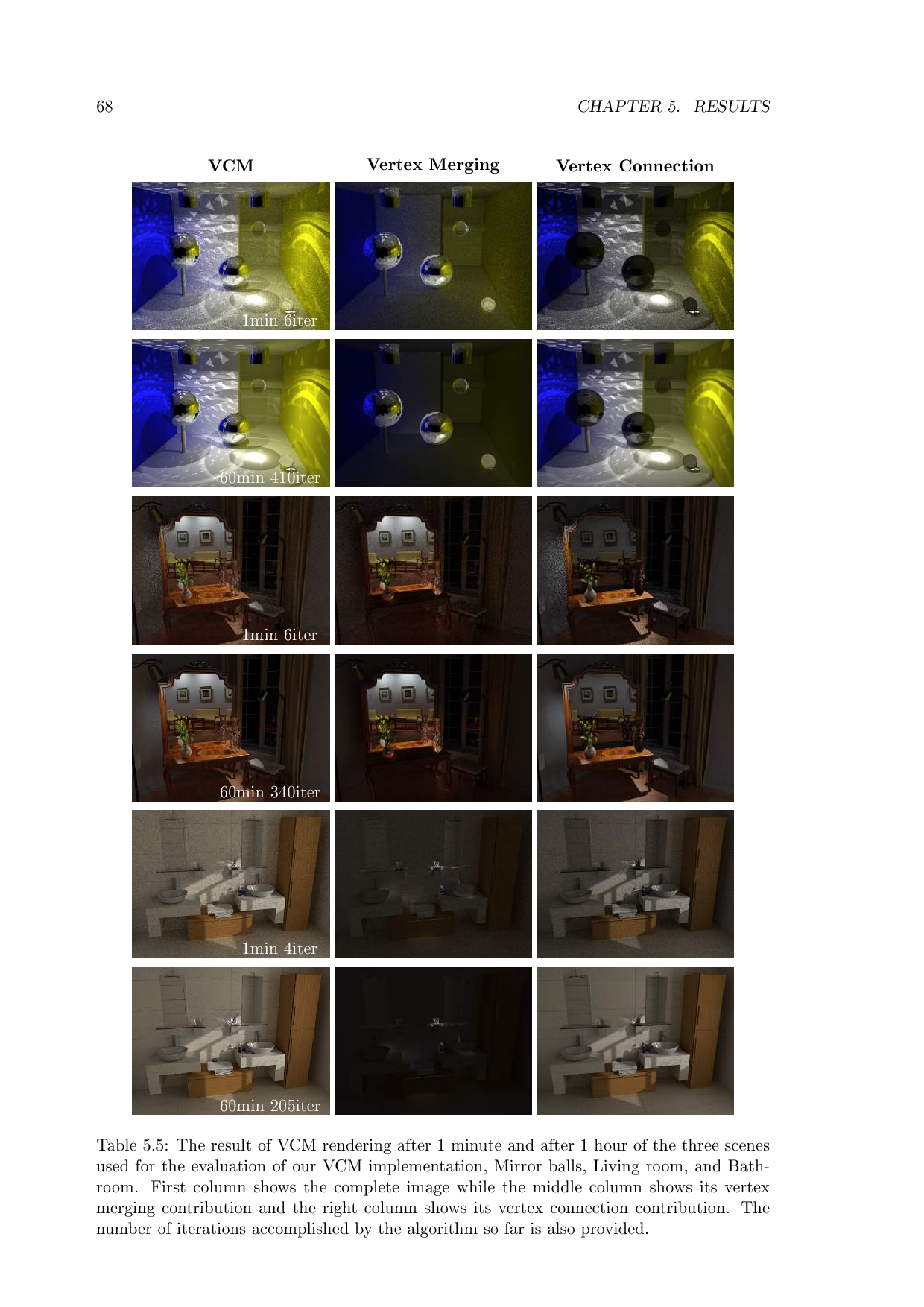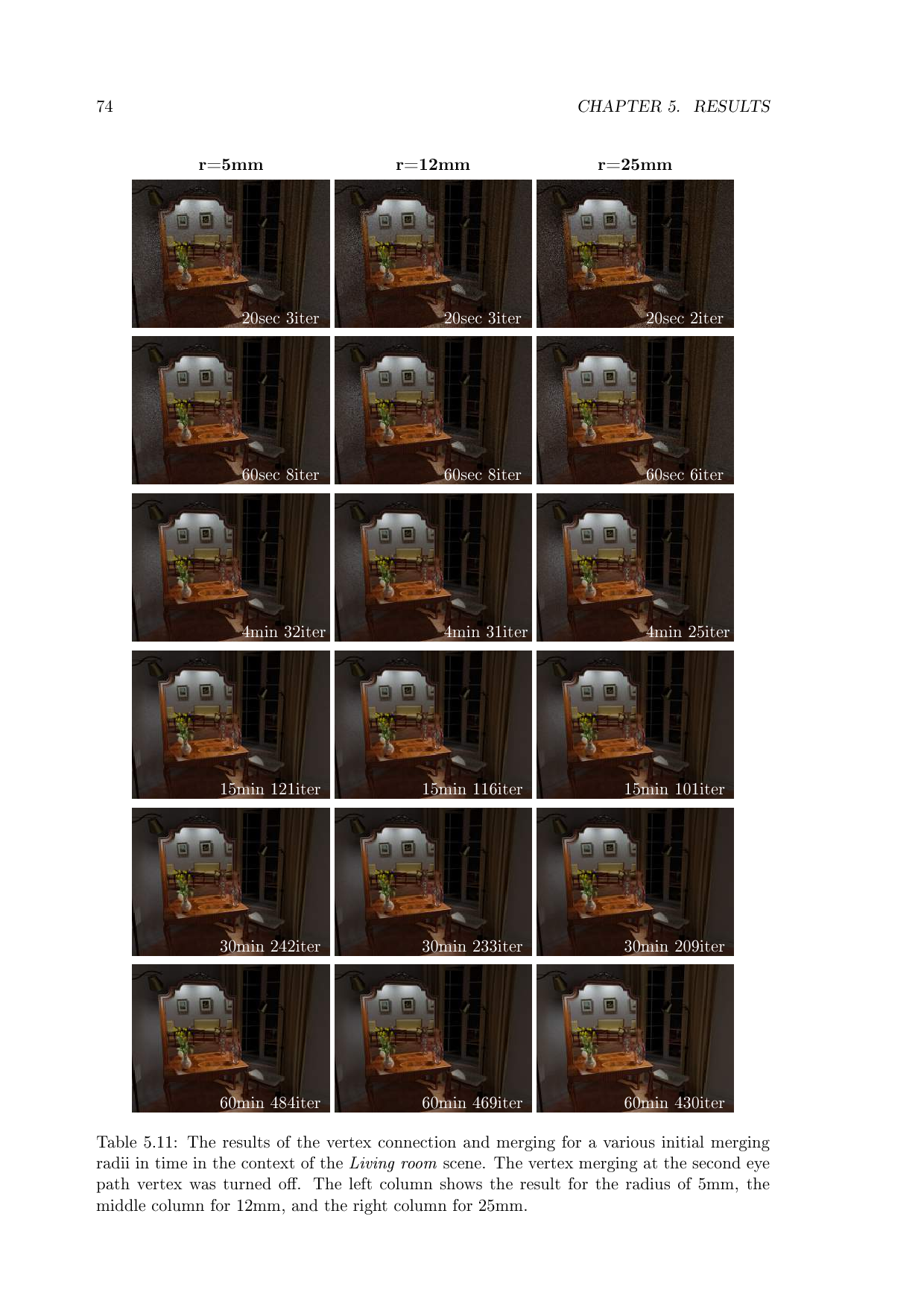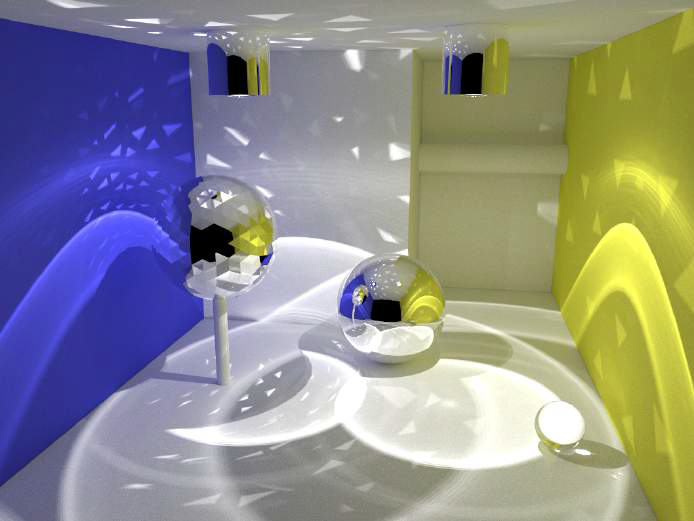Efficient methods for computing complex global illumination effects
Computing a photo realistic image of an arbitrary virtual scene in an affordable amount of time is still an open problem. Often, one has to trade certain illumination effects for speed. However, the recently proposed global illumination methods show that the solution to the problem does not only lie in increasing the speed of the computer hardware, but also in careful algorithm design. This thesis presents a comprehensive overview of the theory of the global illumination, discusses the fundamental rendering algorithms using the presented concepts and a recent method, vertex connection and merging (VCM), is presented in detail as a combination of the basic algorithms. The text follows with the description of the architecture of an advanced photorealistic rendering software and with the description of the VCM implementation within an existing rendering toolkit. Then we evaluate the VCM algorithm, compare it to the other algorithms, and present how its input parameters affect the resulting image.

Cena děkana za vynikající diplomovou práci

